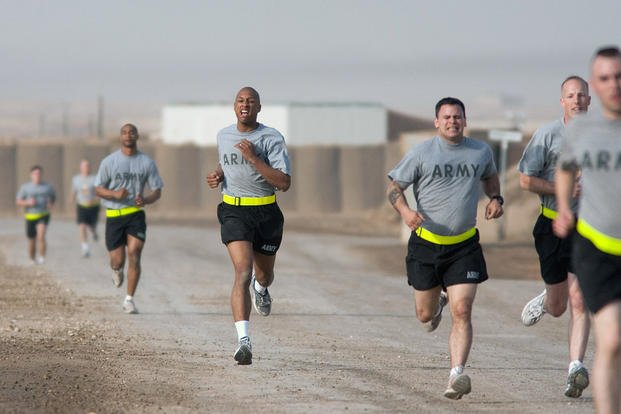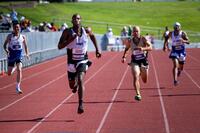You may have heard the Chinese proverb "A journey of a thousand miles begins with a single step." Starting a fitness plan can often seem as overwhelming as a 1000-mile trek on foot. But knowing where and when to take that first step can make all the difference.
Many people who haven't exercised in years – or even decades – may feel paralyzed by the choices and advice bombarding them from family, friends, their doctors, and social media. This can lead to a perpetual "One day..." internal dialogue that delays "Day One" of their fitness journeys.
Questions may flood your mind: Should I hire a personal trainer? Should I join a gym? Should I go on a diet or start where I left off 20 years ago? Should I train for 30 minutes or for an hour? Should I lift weights, focus on cardio, or a blend of both?
The most crucial step to starting your exercise journey is to determine your current fitness level and identify areas that need the most attention.
It's particularly important to seek medical approval, especially if you have been inactive for a long time or are on medication that could affect your fitness goals, such as weight loss or gain. This self-assessment is the cornerstone of an effective fitness journey.
Here’s how to get started:
Set a health and wellness goal. If your motivation is a specific health desire such as improving blood sugar levels, cholesterol, or triglycerides, then you have a tangible (and logical) goal to work toward. Use the next six to twelve months between doctor’s visits to aim for weight loss and improvement in these numbers, which can help keep you focused.
Set a fitness performance goal. A fitness performance goal can have cascading effects that help you create several new healthy habits. A performance goal provides a tangible objective, such as running a mile for time, bench pressing your body weight, or doing pull-ups for the first time in your life.
These goals require more than just smart programming. You will likely eat better and drink more water for fuel needed to train with more energy. You will likely sleep better, which will help you recover from each day’s workout and prepare you for the next day. You will make better social choices, such as avoiding alcohol and smoking the night before a morning workout.
Get moving and feeling better. Give movement just one week, and it will change how you feel. Give movement two to three months, and it will change how you look. Give movement a year, and it will change your life. You do not need a specific goal at first – just move to feel better.
Get moving gently with basic stretches, walking, biking, other non-impact cardio, and basic calisthenics. Starting with light dumbbells is also fine, progressing to heavier weights, gym equipment, and free weights. Once you feel better, you may be able to work toward a fitness performance goal like walking or running a 5K, lifting weights, or even participating in a triathlon or adventure race. Or, you can simply continue your health and wellness goals and increase time and intensity.
Begin with easy movements. For those who have been inactive for decades or have never started a fitness program, start with simple activities like walking or stationary biking. A stationary bike, for instance, can remove the risk of injury while giving you a gentle introduction to cardiovascular fitness. Incorporate stretching and self-massage to prepare your body for more training volume as you progress. Following a 'mobility day' model for a week or two can gently ease back into regular movement. This could involve five minutes of walking or biking, followed by five minutes of stretching for 20 to 30 minutes. For more information, see this Mobility Day walk-through video.
Establish a frequency that feels manageable. Instead of jumping into a rigorous five-day-a-week schedule, go with every other day and start with three days a week. This will allow your body to adapt and recover, reducing the risk of injuries. You will also slowly start to gain confidence and strength. Consider mixing in different forms of exercise. Gradually incorporate lightweight training, advanced stretching techniques, and low-impact cardio. This approach will enhance your overall fitness without placing too much stress on any one part of your body. You can use each as a section of the workout to create a complete program: warm up, work out, cool down.
Consistency is more important than performance and intensity. When you are starting your fitness journey, consistency is more important than how well you do. Schedule a daily appointment with yourself when you have no conflicts with your calendar. Many choose to make this appointment first thing in the morning before the day starts, when the only competition is 30 minutes of extra sleep. This is the most important piece of training: if it is not in the schedule, it does not exist.
Remember, developing a fitness plan is a highly individual journey. What works for your neighbor may not be the best for you. Begin with a solid self-assessment, embark on easy movements, and gradually expand your routine. This approach will make fitness more of a daily journey than a destination, opening your future to options you would not have dreamed of after a year of starting down this path.
Instead of telling yourself, "One day..." let today be your "Day One." The journey doesn't have to be overwhelming. It just needs to begin. Take that first step, and the path will become clearer with each movement forward.
Want to Learn More About Military Life?
Whether you're thinking of joining the military, looking for fitness and basic training tips, or keeping up with military life and benefits, Military.com has you covered. Subscribe to Military.com to have military news, updates and resources delivered directly to your inbox.


















